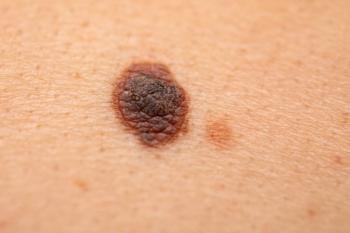
Mona Shahriari, M.D., Discusses Advances in Prurigo Nodularis | Fall Clinical Derm 2025
Mona Shahriari, M.D., dermatologist at Central Connecticut Dermatology and an associate clinical professor at Yale School of Medicine discusses the highlights of her session called ‘Seeing Clearly: A Visual Guide to Diagnosing Prurigo Nodularis in Skin of Color.’
Advances in prurigo nodularis treatment, diagnosis and pathology were covered during the 2025 Fall Clinical Dermatology Conference session titled ‘Seeing Clearly: A Visual Guide to Diagnosing Prurigo Nodularis in Skin of Color’ given by Mona Shahriari, M.D., dermatologist at Central Connecticut Dermatology and an associate clinical professor at Yale School of Medicine.
Prurigo nodularis is a rare skin disease characterized by symmetrically distributed, intensely itchy nodules that appear on the trunk, arms and legs. It affects approximately 72 per 100,000 people in the United States and primarily occurs in adults
While the exact cause of prurigo nodularis is unknown, but factors including underlying medical conditions such as atopic dermatitis and psychological factors such as stress may contribute to its development. For example,
Shahriari’s talk focused in part on the diagnostic and treatment challenges in prurigo nodularis patients of color.
“Transdermal water loss lowers amounts of ceramides in the stratum corneum, as well as in large mast cells in the skin of our patients of color, and this makes them more susceptible to pruritus,” Shahriari said in an on-site interview.
Early symptom intervention is also key for patients because of the post inflammatory pigment changes caused by prurigo nodularis, Shahriari explained during her interview. This includes scarring caused by scratching.
“Prevention is always easier than going back and playing catch up and trying to treat,” Shahriari said.
Another major takeaway from Shahriari’s talk is the growing reception of prurigo nodularis as a systemic condition, not just a skin disease.
“There's new data coming out that the inflammation of prurigo nodularis can cause kidney issues,” Shahriari said. “Historically, we thought kidney disease was a comorbidity. Now we're starting to see that role reverse, where the inflammation related to prurigo nodularis can cause other issues in our body.”
Shahariar underscored how much progress has been made in understanding and treating this once-overlooked disease. “We were really lucky to kick off this year's Fall Clinical meeting with a talk on prurigo nodularis in skin of color, given that this is a disease that is kind of orphaned and didn’t even have an ICD code once upon a time,” Shahriari said.
The 25th Annual Fall Clinical Dermatology Conference is currently being held in Las Vegas, Nevada. The conference ends Oct. 26.
Newsletter
Get the latest industry news, event updates, and more from Managed healthcare Executive.




















































